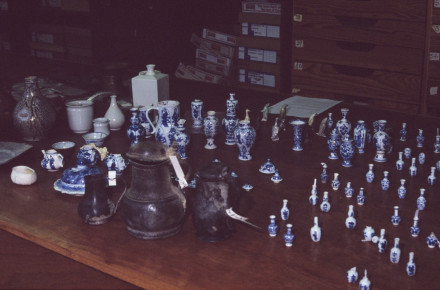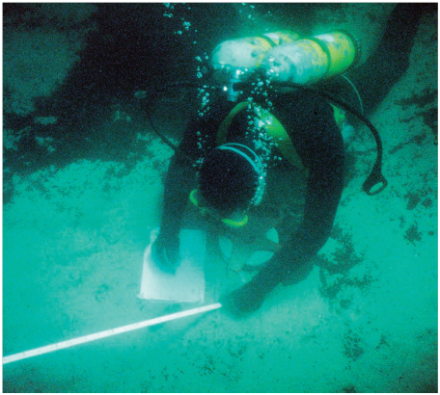History
The Oosterland was a big East Indiaman sailing between Patria and the Indies. The vessel undertook four major voyages during its service in the VOC and had a relatively long career with the VOC and transported a variety of expensive Asiatic products during the first three voyages. Her second voyage was very successful, and she only took two months and ten days to sail from the Netherlands to the Cape, arriving in July 1688. Most voyages from the Netherlands took between four and six months! She was carrying refugees from France among her 33 passengers, including some Huguenot families who were later to become significant in South Africa's history.
In the spring of 1694, the Oosterland left the Netherlands with 342 people on board and reached Batavia on 11 June 1695. One hundred and eleven seamen and soldiers died during this ill-fated journey.
On her final journey, the Oosterland was part of a fleet on a return journey from Sri Lanka. Many people aboard were sick, so the fleet took anchor in Table Bay. However, a strong north-westerly wind arose, and sea conditions worsened. The Kallendijk, another ship of the joint fleet, broke anchor early on the morning of 24 May, went adrift and rammed the stern of the Oosterland, severing the anchor cable. More anchors were dropped in an attempt to save both vessels. The drifting Kallendijk was fortunately brought under control, but the Oosterland snapped its cables again a few hours later and could not be saved. Within minutes the ship hit the shallows near the Salt River mouth and foundered with heavy loss of life. Reportedly, of the 200 people on board, 185 people went down with the ship. The Waddingsveen was lost during the same gale with additional casualties.
The foundering of the Oosterland together with the Waddingsveen resulted in a considerable setback for the Dutch East India Company.

Description
| People on board | 300 |
|---|---|
| Length | 147 ¾ feet (45 m) |
| Width | 36 feet (11 m) |
| Tonnage | 1123 ton (562 last) |
Status
Nearly 300 years after being lost, the ships Oosterland and Waddingsveen were found by amateur divers in 1988. This discovery resulted in the first scientific underwater archaeological excavation in South Africa. This archaeological excavation was led by Bruno Werz in combination with the University of Cape Town and started in the early 1990s.
The Oosterland lies at a depth of 6 metres, just a few hundred metres from the entrance to Milnerton Lagoon. However, strong winds and currents, in combination with cold water and poor visibility, made the excavation of the wreck site quite challenging. Excavators noted that there was a lot of sand overburden on the site, so the ship was excavated over several seasons in small sections.
A large amount of porcelain was recovered as well as cannons, which allowed the ship to be identified. Other artefacts that were recovered include textiles, cinnamon, wood and diamonds.


A basket of indigo was of particular interest, as were the ship’s fixtures and fittings such as coils of rope, which remained in situ. The recovered artefacts were split between the divers and the museum. There is a large archive of artefacts and documents held by Iziko Museums and Bruno Werz.

There were several salvors and divers who showed an interest in the wreck. This resulted in some disagreements between various factions. As a result, salvage work might also have been undertaken on the site before the excavation started, but this is unconfirmed.

This wreck site is protected in the National Heritage Resources Act, No. 25 of 1999. This act regards historic shipwrecks as well. The site may not be disturbed without the permission of the South African Resources Agency (SAHRA) and artefacts removed from the wreck may not be traded without SAHRA's permission.

References
- Werz, Bruno E.J.S.
Een bedroefd, en beclaaglijck ongeval'. De wrakken van de VOC-schepen Oosterland en Waddinxveen (1697) in de Tafelbaai.
Zutphen, Walburg Pers. - DAS 5975.4.
- Dagregister Kaap , 23-5-1697.
- Lesa la Grange, Martijn Manders, Briege Williams, John Gribble and Leon Derksen (2024).
Dutch Shipwrecks in South African Waters: A Brief History of Sites, Stores and Archives [Unpublished]. - Werz, B. (1992).
The excavation of the Oosterland in Table Bay: the first systematic exercise in maritime archaeology in Southern Africa.